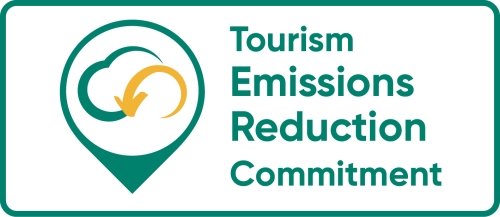Incredible: how Tourism deployed a nationally coordinated emissions program in record time
The Australia Tourism Industry Council (ATIC) faced a significant challenge: the inability to effectively measure, track, and manage industry-wide emissions. With no centralised system to coordinate efforts across the sector, the organisation struggled to gain insights into the actions taken by the industry to reduce emissions. To overcome these hurdles, ATIC turned to the ERC Protocol by ERC Australia, a decision that transformed its approach to decarbonisation.

Photo Credit: Sleepy Bay, Harrison Candlin - Vagary
The Challenge: Measuring, Managing and Reducing Emissions
The absence of a unified platform left ATIC without a clear view of the industry's carbon footprint and the measures being taken to reduce it. This lack of visibility hindered their ability to support and guide the industry towards meaningful environmental action.
So how do you organise an entire industry sector to work together to reduce emissions – a sector with more businesses than some of the largest supply chains in Australia?
The Solution: You use the ERC Protocol – the emission reduction program designed for every business.
Using the ERC Protocol, tourism councils across Australia have launched what will soon become one of Australia’s largest coordinated and most participated emissions reduction programs.
Applying the technology options of the ERC Protocol, tourism councils have created their own “white-label” with portal integration– the Tourism Emission Reduction Commitment (TERC).
Very soon, you will see TERC badges popping up on tourism operator websites and shopfronts across Australia.
When you see TERC, this is what it means:
- A minimum standard. TERC businesses must achieve a minimum of Stage 3 of the ERC Protocol, which means they:
- Commit: Measure their emissions
- Reduce: lodge actions to reduce emissions
- Avoid: lodge a plan to transition to renewables
- Transparent reporting: Every TERC Emissions Reduction Report is available to be publicly displayed via a link or QR code.
- Collective impact: The efforts of all TERC members are consolidated for collective impact reporting. There are over 90 reporting groups in TERC (National, State/Territory and each regional tourism area).
TERC means that the tourism industry councils can understand the emissions reduction participation and maturity of their member segments and where support and guidance can be provided to accelerate the transition to lower emissions.
TERC businesses can communicate their plans to engage customers and employees, as well as share their plans across multiple aggregated reporting groups (a process that is automated).
So we enter a new era where mass participation and mass coordination are now possible and accessible. The ERC Protocol's design facilitated a rapid and cost-effective nationwide deployment, making it accessible to all members regardless of their size or resources.
Congratulations to the tourism industry for their initiative and input into the program.
Look out for TERC businesses when booking your next holiday!

For more information on how the ERC Protocol can revolutionise your industry's approach to decarbonisation, visit www.ercaustralia.com.au or reach out to the ERC Australia team at [email protected] .
If you are an Australian tourism business, check out the Quality Tourism Australia website for more information or reach out to your State Tourism Council to be part of this program.